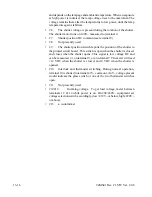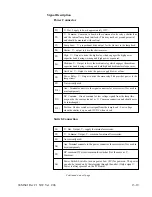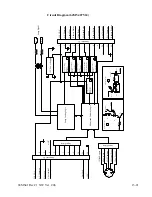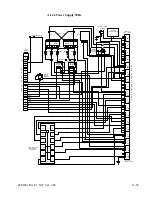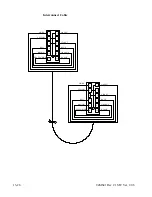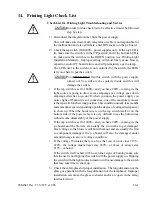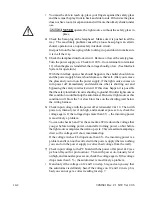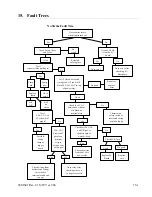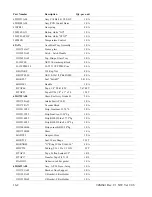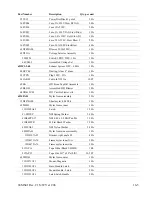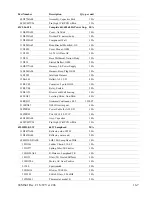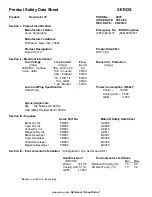
94MS41 Rev. C1 S/W Ver 2.06
14-1
14. Printing Light Check List
Check List for Printing Light Troubleshooting and Service
!
C
In order for this check list to be effective it must be followed
step by step.
1) Disconnect the integrator/timer from the power supply.
This will make sure that a faulty integrator or cable is not responsible for
the malfunction and also eliminate a bad DIN socket on the p.c.board.
2) Check the tap switch (208/240V~ power supplies only. If the top LED is
lit, make sure the switch is in the UP position, and if the bottom LED is
lit, make sure the switch is in the DOWN position (see Printing Light
Installation Manual). Improper setting will most likely cause blower,
capacitor, and/or PC board failure and will prematurely age the lamp.
The LEDs next to the switch are not controlled by the switch, the LEDs
tell you where to put the switch.
!
C
You
MUST NOT
flip this switch with the power supply
turned on! You will arc the contacts inside and this will
damage the switch.
•
If the tap switch is set for 240V~ and you have 208V~ coming in, the
light source is going to draw excess amperage (as voltage goes down
amperage draw has to go up). If when you open the power supply you
notice right off burnt wires or connectors, one of the most likely causes
is the tap switch in the wrong position. This condition usually take months
and sometimes years (depending upon the degree of voltage discrepancy)
to show up. When the burnt wire is on the tap switch itself or on the
bottom side of the power relay it is very difficult to see the burnt wires
without some disassembly of the power supply.
•
If the tap switch is set for 208V~ and you have 240V~ coming in, the
p.c.board and the blowers are usually the two items to get damaged.
Over voltage to the blowers will burn them out and are usually the first
to component damaged, the p.c.board will also be damaged under
extended usage in an over voltage condition.
•
If the voltage fluctuates there is a line that you can not cross 219V~
220V~ the voltage must always stay 220V~ or above or always stay
219V~ or below.
If the switch itself is bad with no external signs of burning make sure
that the user is not flipping the switch with the power supply on. Flipping
the switch with the light source turned on will cause damage to the switch
that may take time to show up.
3) Check the safety glass for proper installation. The long dimension of the
glass goes parallel with the long dimension of the lamphead. Improper
installation can cause the glass to shatter and/or an 'open' in the safety
interlock circuit.




